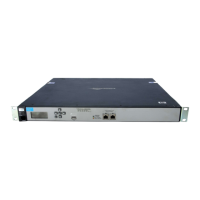Mobility traffic manager
Scenario 6: Distributing traffic using VLAN ranges
9-53
A single VSC is used. It is configured with the It is configured with the Wireless mobility,
Mobility traffic manager option enabled. The home network for users is defined by setting
the Egress network when the VSC is bound to the APs. The Egress network is mapped to a
network profile that defines a range of VLANs on the LAN port on the controller.
By assigning a different profile name to AP groups, traffic can be split between controllers. In
this example, the APs are split into two groups:
Group 1: The VSC binding is configured with Egress network set to Net1, putting traffic
from this group onto VLAN range 10-30.
Group 2: The VSC binding is configured with Egress network set to Net2, putting traffic
from this group onto VLAN range 11-51.
MTM uses a round-robin mechanism to distribute traffic across the VLANs range. The first
wireless user is assigned to the first VLAN in the range. Subsequent users are assigned to the
next VLAN in the range. When the range is exhausted, assignment starts with the first VLAN
again. For example, if the VLAN range is defined as VLAN IDs 1 to 20, the first user is
assigned to VLAN 1. The second is assigned to VLAN 2. The 21st user is assigned to VLAN 1
again. Although VLAN assignment is sequential through the range, from the user’s point of
view, VLAN assignment will appear to be random.
Configuration overview
The following sections provide a summary of the configuration settings needed to enable
mobility support only. It is assumed that installation and configuration of all controllers and
APs so that they are fully operational on the network was performed as explained in the other
chapters in this guide.
Network
profile name
Assigned to
LAN port on
Assigned to
VLAN range
Net1 Controller 1 10-30
Net2 Controller 2 31-50

